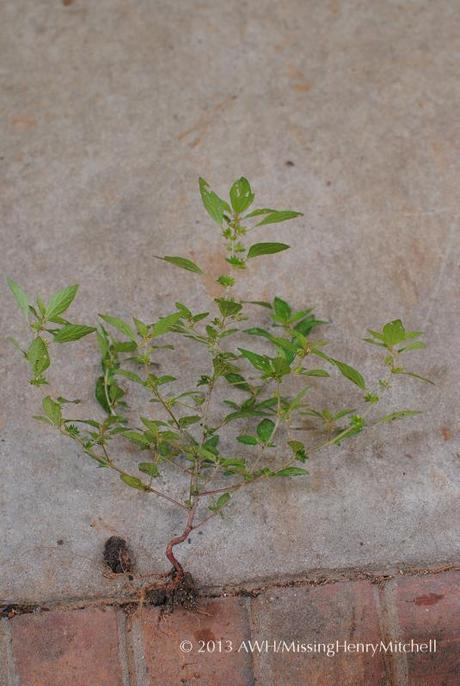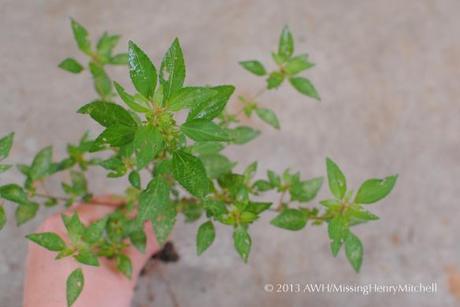Finally, I know who this fellow is, sort of. Acalypha…somebody, probably rhomboidea, commonly known as three-seeded mercury. He and his brothers are everywhere in my garden.

This annual member of the Euphorbiaceae family starts as a thin, erect reddish stem with narrow leaves, about an inch to an inch and a half long, arranged opposite along the stem. As it grows, it branches, and leaves are arranged alternately. Here is where my ignorance of botany is exposed:There appear to be small yellow flowers at the leaf axils, but those yellowish bits I see could be bracts, or technically it might be an inflorescence …anyway, if you care to read details about the plant’s structure, you can read the description from the University of Guelph extension, or the Wikipedia site. For me, right now, I know I’m fairly close to identifying the plant.
This summer annual weed is not a nuisance, except that there’s a lot of it in my garden. It doesn’t reseed aggressively like hairy bittercress and it’s not difficult to eradicate. Despite the taproot, the plants are easy to pull. They are also said to be browsed by deer (not if there are phlox and hosta to eat, they’re not).

According to the Southern Living Garden Problem Solver, which may or may not have misclassified this as Acalypha virginica (my plant definitely doesn’t look like the one shown by Illinois Wildflowers.info), many insects love to feed on the leaves. Thus, my sample, with its raggedy, chewn leaves should be pretty typical.
The seeds are supposed to be choice food for mourning doves, whom I would gladly welcome to my garden because I love their call. The buffet is open!

